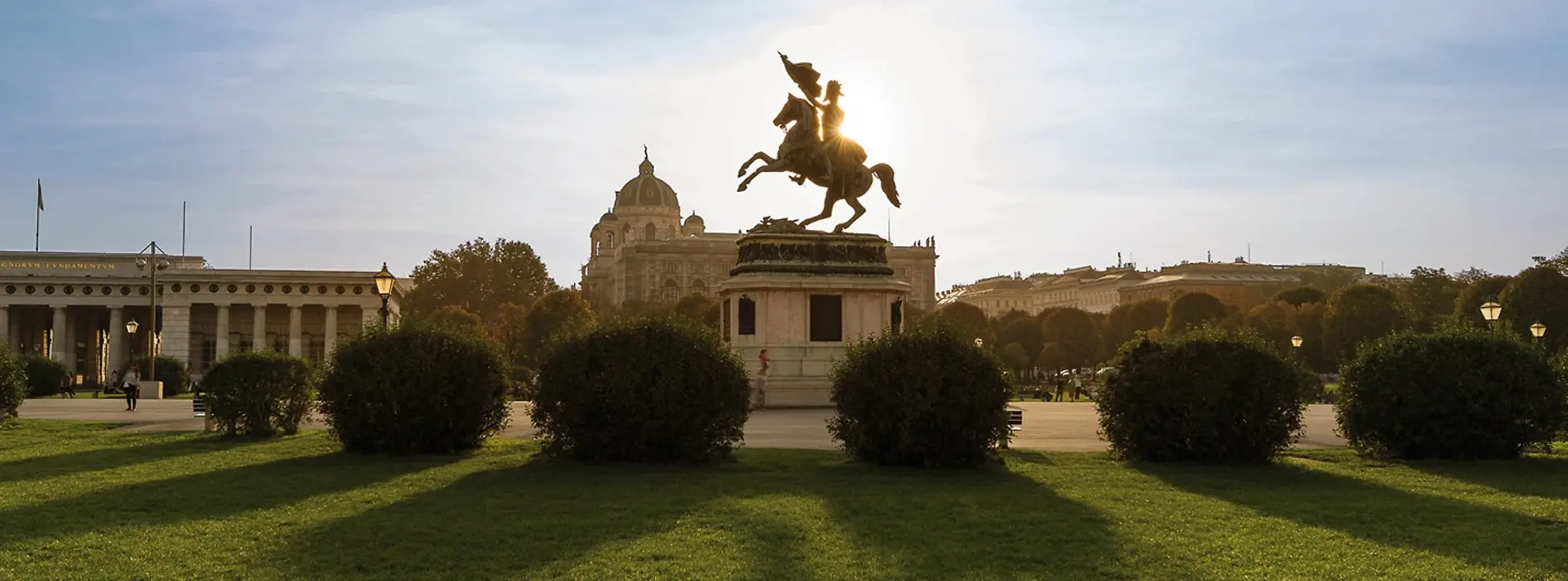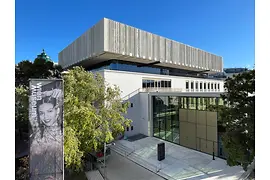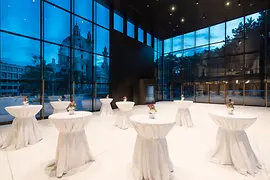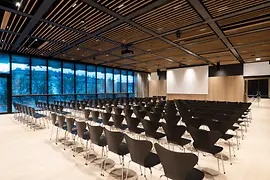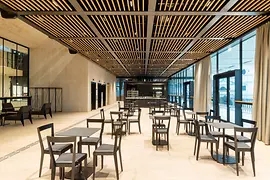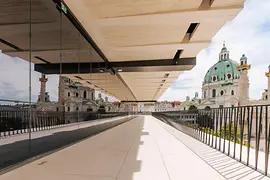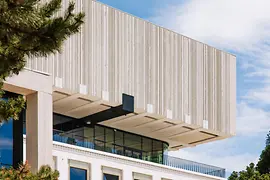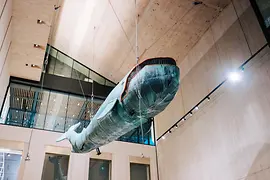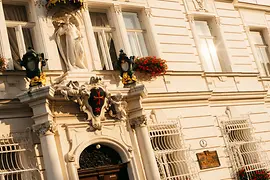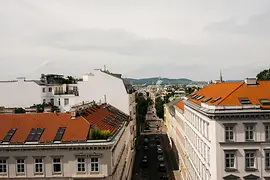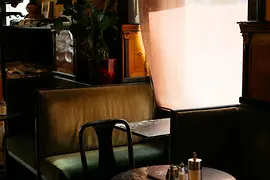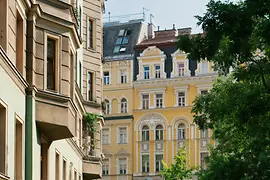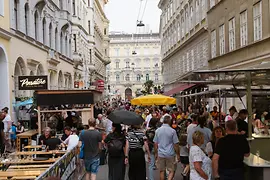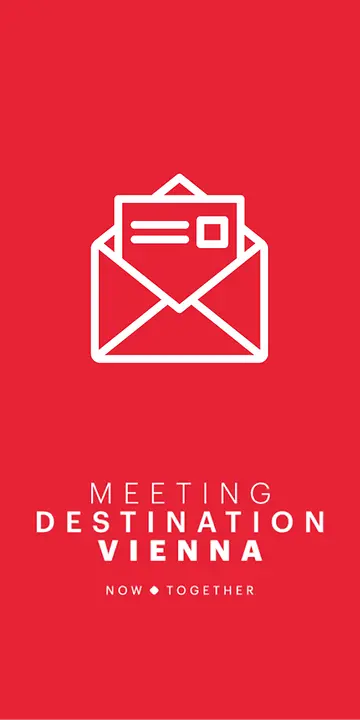Vienna's Neighborhoods: Gusshausviertel & Freihausviertel
In 2024, Vienna is celebrating its yearly theme "Heartbeat Streets" and invites you to discover its unique neighborhoods (known as "Grätzel" in Vienna), where you can experience the authentic Vienna. Two of these typical neighborhoods, located in the 4th district in close proximity to the city center, boast extraordinary diversity. If you are visiting the adjacent neighborhoods of Gusshausviertel and Freihausviertel, the best place to start is Karlsplatz in the city center, which is extremely well connected to the public transport network. Karlsplatz is in the immediate vicinity of several important attractions such as the Wiener Musikverein, the Künstlerhaus, the Albertina Modern and the Otto Wagner Pavilion.
Events with a view
Since December 2023, you would be foolish to avoid the newly renovated Wien Museum at Karlsplatz, which captures the city’s fascinating history from Roman times to the present day. After years of renovation and expansion, it now has a shiny new look and not only features the first permanent exhibition in Austria that is accessible and free of charge, but it also boasts special infrastructure for meetings: A 276 square meter event hall on the newly-created terrace floor of the museum (on the third floor) - ideal for speeches, panel discussions, or gala dinners. Alongside the variable room layout, the location Wien Museum impresses with a unique view of Karlsplatz, Karlskirche (St. Charles Church) and the surrounding area. The spectacular terrace area and the foyer on the ground floor can also be hired out for events.
Karlsplatz - the central hub of Vienna
Karlsplatz is located right on the Wien Museum’s doorstep. An urban space of almost 50,000 square meters that is filled with life around the clock by young and old. Numerous popular events take place here, such as the Art Advent Christmas Market, famed for its artisan handicrafts and organic-certified food, the multi-day Popfest Wien with free entry, the free open-air Kaleidoskop cinema or Karlstag, when cultural institutions serve up a diverse program. Aside from events, the Viennese like to meet here for a drink by the large pond or on a park bench. One of Vienna’s most beautiful attractions towers over Karlsplatz: Karlskirche, completed in 1739. Its enormous green dome and opulent interior are unparalleled - the epitome of Baroque architecture.
Gusshausviertel: global and relaxed
Directly behind the Karlskirche, you enter a wonderful Vienna neighborhood: the Gusshausviertel, a typical Gründerzeit city center neighborhood, surrounded by Karlsplatz, the Belvedere (both the Upper Belvedere and the Lower Belvedere can be hired for meetings) and Vienna Central Station. Nevertheless, things are relaxed here. The numerous embassies and foreign representations based here provide an international feel, with many housed in grand former palaces. In Gusshausviertel and Freihausviertel, you can also stay or hold meetings in historical buildings, such as Hotel Kaiserhof or the Schick Hotel Erzherzog Rainer.
Authentic restaurants, bars and cafés have sprung up around Gusshausstrasse, which was once home to "Gusshaus", the former imperial and royal cannon foundry. If you like Viennese cuisine, you will be in your element at the Buchecker & Sohn family business, the Wiener Wiazhaus, or Artner Gasthaus auf der Wieden. Z'Som serves up innovative bistronomy, while Casolaro Bros offers Neapolitan specialties. And don't miss out on the delightful Carl Ludwig Cafe in the Palais Erzherzog Carl Ludwig garden!
Sustainable mobility was popular in Gusshausviertel before its time: Argentinierstrasse, the neighborhood’s main road and one of Vienna's busiest cycle routes, will be converted into a traffic-free cycle lane by autumn 2024. The ORF RadioKulturhaus, which hosts countless events, is one of the neighborhood's cultural venues. Numerous faculty buildings of the Vienna University of Technology (TU Wien), which function as special event locations, are also located here.
Freihausviertel: hip and historic
If you cross the Wiedner Hauptstrasse coming from Gusshausviertel, you encounter the colorful Freihausviertel. The neighborhood is named after the Freihaus, a one-time building complex which went down in the annals of music history. It was here that Mozart’s Magic Flute was premiered in 1791. Today, the Freihausviertel is a popular neighborhood with an international feel. It is hip and urban, yet Viennese through and through.
There is a colorful mix in Freihausviertel: Second-hand and upcycling shops as well as a lively gallery scene. In the center of the neighborhood, in the Schleifmühlgasse, special restaurants and shops line the streets. Café Anzengruber is well known far beyond this neighborhood, mainly for its Wiener Schnitzel. Right next door, the Sekt Comptoir Szigeti serves exquisitie sparkling wine products. Coffee specialties from all around the world can be found in the nearby Rösterei Alt Wien. And Vollpension is a special local initiative to combat old-age poverty. In this café, the fantastic pastries are baked and served by grandmothers and -fathers.
Other reasons why Freihausviertel is perfect for a journey of discovery: the Ehrbar Hall (Ehrbar Saal), a great place for classical music, the Third Man Museum, dedicated to the famous eponymous film noir, the Planquadrat Park, hidden behind a block of houses, or the Old Hay Mill (die Alte Heumühle), one of the oldest buildings in Vienna.
If you walk through Gusshausviertel and Freihausviertel, you actually end up directly on the Rechte Wienzeile, where you can explore the famous Viennese Naschmarkt. You can organise wonderful food tours there amongst other things as part of your itinerary - and there are also some excellent hotels for organising meetings here, such as the Hotel Indigo Vienna – Naschmarkt.
More about the venues in Gusshausviertel and Freihausviertel
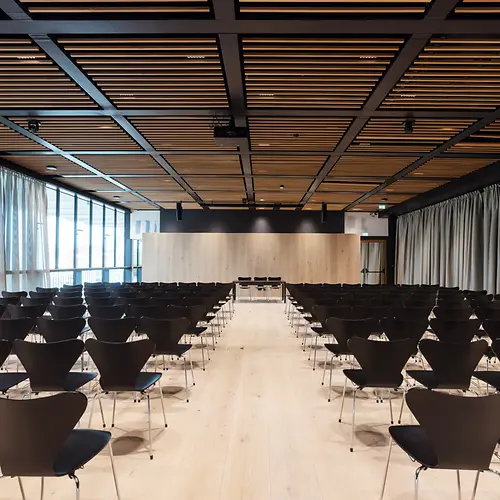
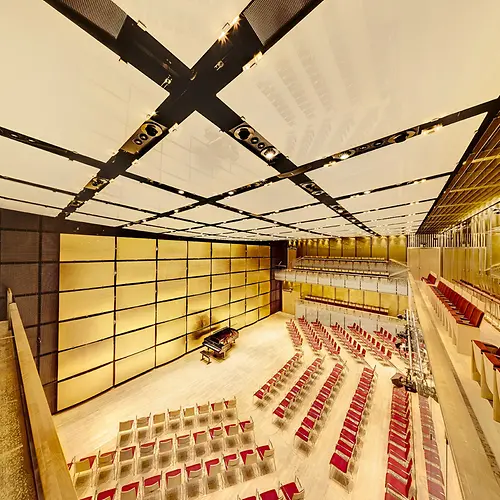
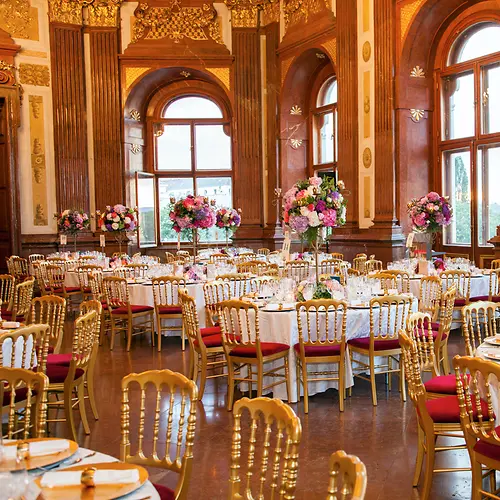
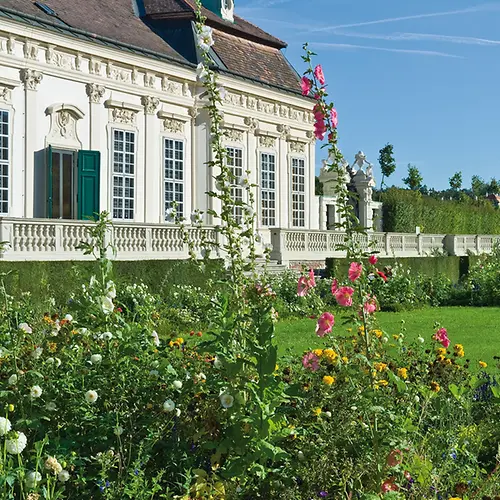
Hotel KAISERHOF Wien
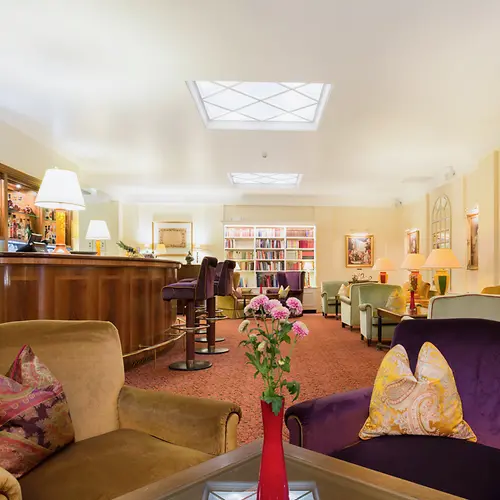
- Frankenberggasse 10, 1040 Wien
- marketing@hotel-kaiserhof.at
- http://www.hotel-kaiserhof.at

Hotel Erzherzog Rainer
Schick Hotels Wien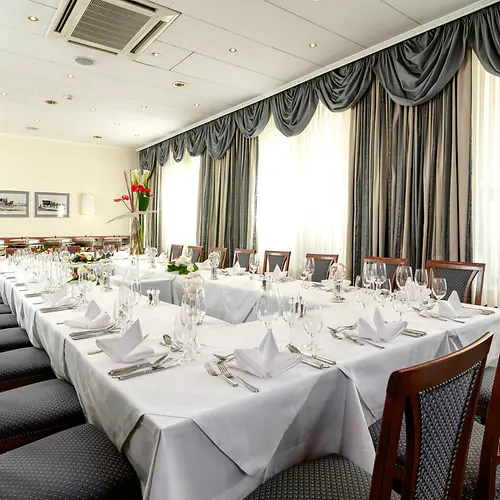
- Wiedner Hauptstraße 27-29, 1040 Wien
- bankett@schick-hotels.com
- https://www.hotelerzherzograiner.wien

ORF RadioKulturhaus
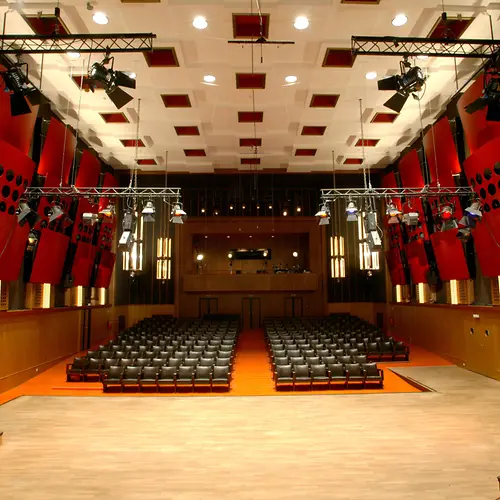
- Argentinierstraße 30a, 1040 Wien
- radiokulturhaus@orf.at
- http://radiokulturhaus.orf.at/

Technische Universität Wien (TU Wien) - Campus Karlsplatz
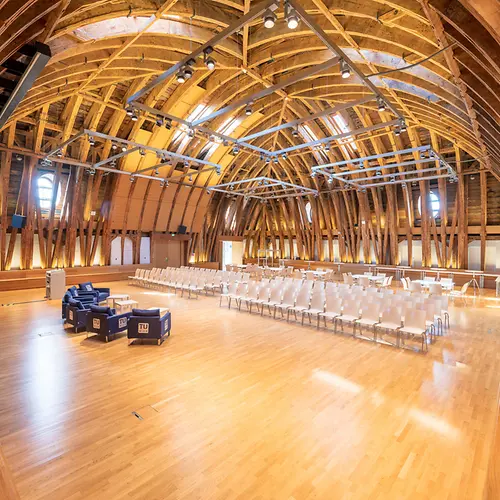
- Karlsplatz 13, 1040 Wien
- events@tuwien.ac.at
- https://www.tuwien.at

Technische Universität Wien (TU Wien) - Campus Gußhaus
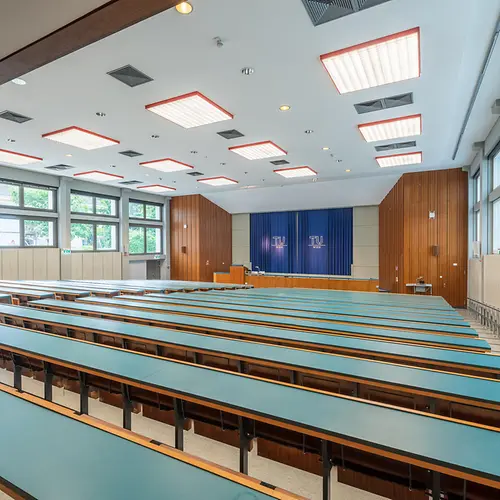
- Gußhausstraße 25-29, 1040 Wien
- events@tuwien.ac.at
- https://www.tuwien.at

Technische Universität Wien (TU Wien) - Campus Freihaus
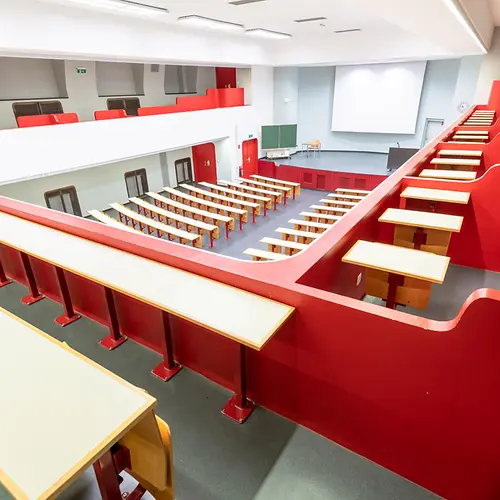
- Wiedner Hauptstraße 8, 1040 Wien
- events@tuwien.ac.at
- https://www.tuwien.at

